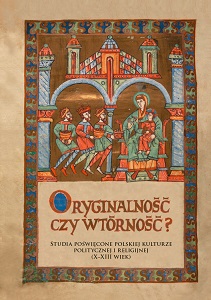Oryginalność i wtórność mennictwa polskiego w X–XII w.
Originality and imitation in Polish coinage of the 10th–12th century
Author(s): Mateusz Bogucki
Subject(s): Middle Ages, 6th to 12th Centuries, 13th to 14th Centuries, 15th Century
Published by: Wydawnictwa Uniwersytetu Warszawskiego
Keywords: medieval history; church history; Christianity in the Middle Ages; religious culture; Poland during the Piast dynasty
Summary/Abstract: This article aims to compare Polish coinage with its German, Bohemian, Scandinavian and Rus’ counterparts, and attempts to determine to what extent Polish minting production was characterized by originality and to what extent it imitated the coinage of the neighbouring states. The conducted study has revealed that, even though the majority of Polish early-medieval coinage was derivative in character, it undeniably had some original features. The chaotic nature of the earliest Polish coinage was in fact rare in other places – the multitude of patterns and depictions, their multiple intermixing, lack of standardization, even a certain randomness in the initial stages of production. Some stabilization is noticeable only from the middle of the 11th century. However, the conducted analysis shows that early-medieval Polish coinage should not be considered in terms of originality and imitation, but rather adaptation and adjustment to the prevailing conditions – the needs and possibilities. This was the case with Bolesław the Wrymouth who, because of contemporary political circumstances, was one of the first European rulers to introduce big single-sided bracteates. Coin production was in most cases one of the tools used to obtain funds for satisfying the needs of the state (the ruler). Sometimes these needs were of prestigious character, at other times they were purely economic. This is why coinage was very often adapted based on the demands of the market, and it rarely produced original solutions and introduced innovations.
- Page Range: 164-232
- Page Count: 69
- Publication Year: 2020
- Language: Czech, Polish
- Content File-PDF

